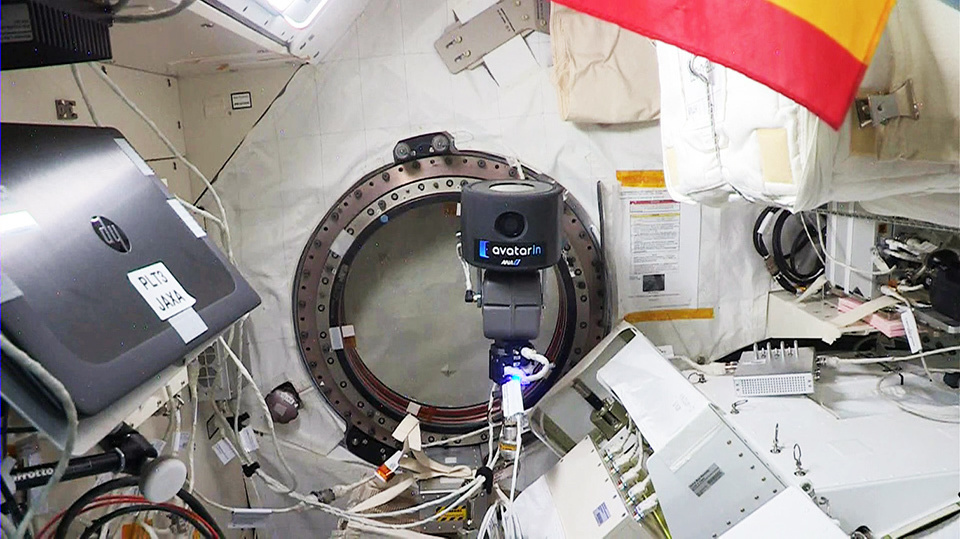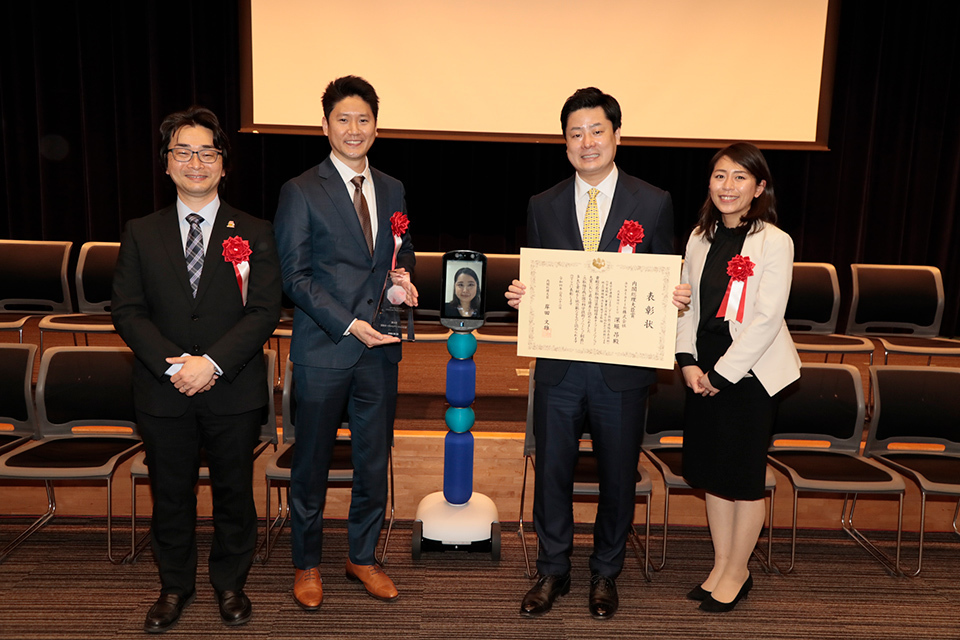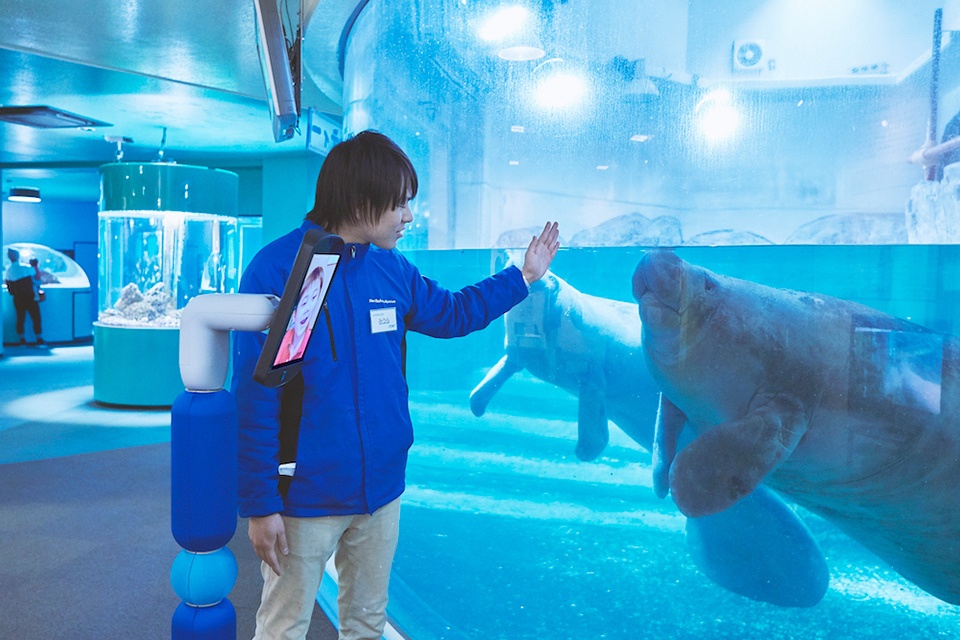Open innovation is a vital part of the Japanese government’s growth strategy. It aims to create innovative technologies and services by fostering collaboration between government, the private sector, and academia. One good example is the space avatar project that a startup, a research institute, and a local government have teamed up to produce.

The space avatar in “Kibo”, the Japanese Experiment Module on the International Space Station. JAXA official ICHIKAWA Chiaki said, “This was the first test to access Kibo and send commands from outside a JAXA facility. The incredibly clear video feed impressed the participants.”
In the more than six decades since humanity first ventured into space, only some 560 people have traveled to this frontier. But in 2020, about 400 people experienced outer space in a four-day span. How was that possible? Think “avatars.”

Avatars offered by avatarin. The monitor displays the user’s face, and the user can tell the avatar where to go and look.

The space avatar project won the top prize at the 4th Japan Open Innovation Prize in 2022, where the Japanese government recognizes excellent examples of open innovation. Pictured at the award ceremony from left: HAYASHI Takanori, representing Oita Prefecture; avatarin’s COO, KAJITANI Kevin, and CEO, FUKABORI Akira; ICHIKAWA Chiaki of JAXA.
In 2020, avatarin, a startup spun out of the airline company ANA Holdings Inc., partnered with the Japan Aerospace Exploration Agency (JAXA) and Oita Prefecture to install a remotely operated robot specialized for activities in space—a “space avatar”— in the Japanese Experiment Module “Kibo” on the International Space Station. That same year, they held an event that allowed members of the public to control the space avatar from Earth. About 400 people, mentioned above, participated in this event.
avatarin defines mobility as being able to transmit one’s consciousness to a remote location and move around on one’s own initiative. The company has been developing its robotic avatar technology to pioneer a new mode of transportation accessible to all. By using an avatar, people can easily transport their thoughts into space, a place where very few people can travel due to physical constraints. This is a concept that avatarin has been developing since its establishment. The company’s CEO, FUKABORI Akira, said, “The space avatar plan was too grandiose for us to achieve on our own, so we sought out partners. JAXA and Oita Prefecture were the first to jump at the opportunity.” They were a perfect match for avatarin’s vision: JAXA anticipates the application of avatar technology to space education, exploration, and development, while Oita Prefecture wants to use advanced technology to solve problems in its communities and promote its local industries.
To help develop the space avatar, many demonstrations using the terrestrial avatar “newme” were conducted. Oita Prefecture, which provided the test field, is located far from Japanese metropolises like Tokyo and Osaka and has many remote islands and mountainous regions. The prefecture sees avatars as a way to address local challenges like poor transportation. HAYASHI Takanori, an Oita Prefecture official, said, “We have conducted a number of demonstrations using avatars, including supervising elderly people, communicating with people who are working away from home in Oita, allowing a hospitalized high school student to participate remotely in afterschool activities, and implementing a remote sightseeing experience of Oita at an overseas tourism exhibition. Especially since the COVID-19 pandemic, the avatars have been used as substitutes for school trips by providing remote tours at museums, etc., and are also used as a means of remote shopping for local shopping districts that have suffered a loss in customer traffic.” This success has led to the mass production of avatars in the prefecture, creating a new local industry with growing promise.

Avatars are coming into more widespread use in cultural facilities. For example, they provide tours at aquariums and museums.

Demand for online shopping has exploded during the pandemic. Oita Prefecture has used avatars at farmers’ stands selling marine and agricultural products.
In a time when society and the technology around us are changing dramatically, conducting research and development has become difficult for a single player alone. Hence the increasing need for open innovation like that carried out by avatarin and others, where companies, laboratories, and local governments collaborate outside their own organizational frameworks. Fukabori pointed out that “even if you want to engage in open innovation, it’s not easy getting organizations with different financial and human resources to work together.” That is why the Kishida administration has encouraged investment in startups to cover their financial weaknesses, the strengthening of collaboration between government, the private sector, and academia, and reformation of universities to attract more talent and funds as a growth strategy that will help create a new form of capitalism—a core administration policy.
“If you want to go fast, go alone. If you want to go far, go together,” said Prime Minister Kishida during his very first policy speech, expressing his ambitions going forward. If open innovation can create teams of talent like the one that put avatars in space, then any dream, no matter how grand, can become a reality.






























